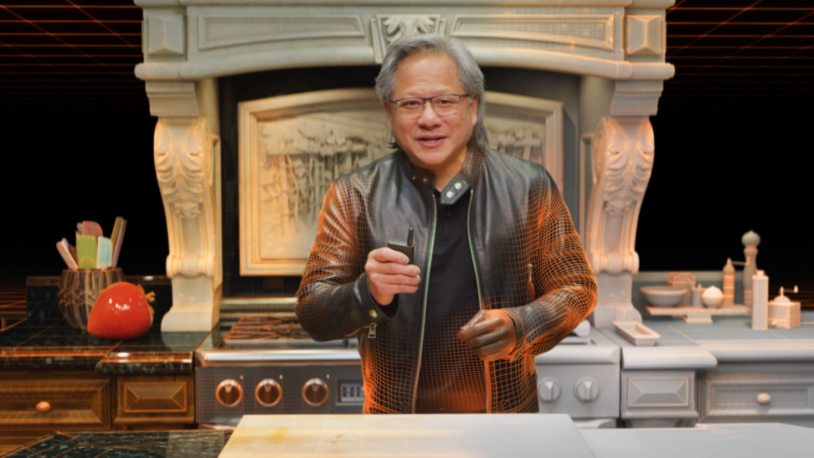Virtual CEO
Skipping ahead to today, things have become far more sophisticated as we have become used to seeing everyone in their basement or living room and a bit more casually dressed. Nvidia (NVDA) seems to have taken the idea of a more ‘folksy’ approach to product introductions and at the recent Nvidia GTC conference the keynote speaker and CEO of Nvidia stood in a kitchen while he showed off some of Nvidia’s recent accomplishments.
As it turns out not only was the kitchen a ‘virtual one, but for 14 seconds during the 1 hour and 48 minute presentation, the CEO was not real and a virtual CEO was substituted. Of course, the discovery that a virtual CEO was used during the presentation caused considerable buzz on social media and Nvidia was pushed to respond with the admission that while the CEO led the conference for almost the entire time, his virtual self subbed in for 14 seconds. If one delves into the presentation that was made at a recent conference about the Ominiverse software itself, there is a section on how they actually modeled their CEO virtual clone and considerably more on the ‘holodeck’ as they call the virtual kitchen, but most unnerving was that it was ‘virtually’ (sorry) impossible to tell the difference between the real CEO and the virtual one.
While that is a good indication that the software works as intended and the users (Nvidia staff) are a talented bunch, it begs the question, “Is what I am watching real or not?” We have noted that some news broadcasts in China are done by virtual anchors that either mimic the actual anchor or are created for that single purpose, and how relatively sophisticated software can manipulate the image of a face to make it fit any audio stream (see below).
Deep fakes and the like are usually created to prove a point or for nefarious reasons, but just slipping in a few virtual seconds, maybe to see if anyone catches it, or to fill in a bit of missing copy, is where things seem to be going and as the software and processing availability become even more sophisticated, it seems to open the door for IR departments to be creating a different type of communication with investors. If we can speak with Albert Einstein and get responses to our questions that look real, a generation or two from now will see a social media ‘friends list’ with lots of ‘virtual friends’ including film stars, musicians, politicians, and historic figures with which you have had many intimate conversations with, without leaving ‘the comfort of your couch’, which seems to be the goal of the current generation. Don’t get us wrong, we love this stuff, but expect the virtualization of media to present a number of very complicated social issues, that will keep the next generation up at night, or will it just become the norm?
Albert Speaks:
https://www.youtube.com/watch?v=RiWB2o-9qMs

 RSS Feed
RSS Feed